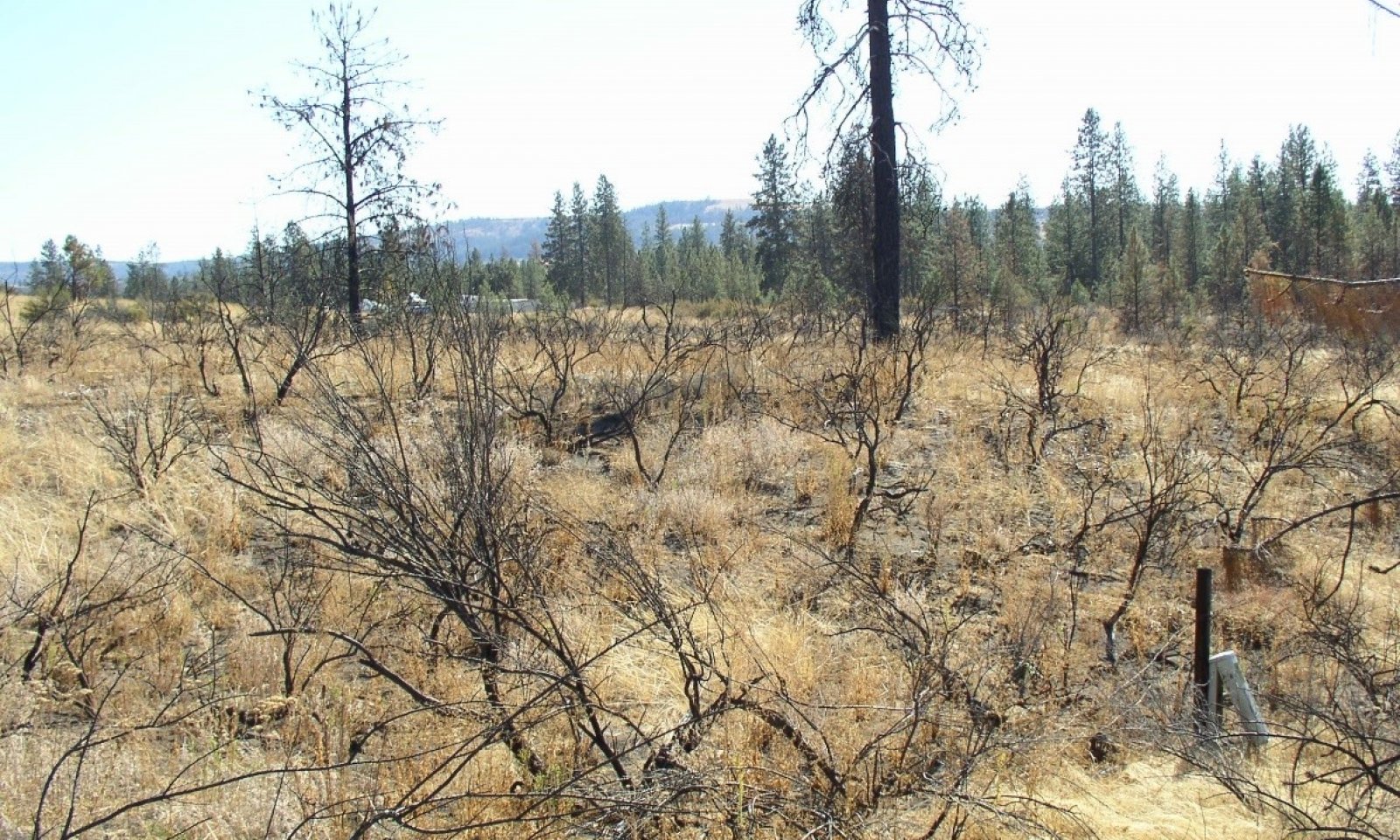
Mesic Xeric Foothills and Mountain Slopes (Ponderosa Pine Hot Dry Shrub Grass)
Scenario model
Current ecosystem state
Select a state
Management practices/drivers
Select a transition or restoration pathway
-
Transition T1A
Fire prevention, stand competition mortality, and decreased forest health.
More details -
Transition T1B
Introduced non-native species
More details -
Transition T1C
Land conversion
More details -
Restoration pathway R2A
Heavy overstory thinning followed by reoccurring understory prescribed burning
More details -
Restoration pathway R3A
native plant reseeding with grazing protection
More details -
Restoration pathway R4A
tree planting
More details -
No transition or restoration pathway between the selected states has been described
Target ecosystem state
Select a state
Description
Ponderosa pine is the only tree species. Antelope bitterbrush is the major shrub species with kinnikinnick, snowbrush ceanothus, spirea, snowberry, and sagebrush in minor amounts depending on location and moisture. Idaho fescue and bluebunch wheatgrass dominate the grass component with varying amount of geyer’s sedge, needle and thread grass, blue wildrye, and rough fescue.
Major insects that cause mortality are the western pine beetle, mountain pine beetle, and pine engraver beetle. The western and mountain pine beetles can kill mature to old growth pine. The pine engraver beetles attack and kill young pole size stands. Drought and tree to tree competition cause stress which increases bark beetle mortality. Other insect concerns in pine include the following defoliators: Pandora moth, pine butterfly, sawflies, and needle miners.
Major diseases include Annosum and Armillaria root rot, commandra rust, and elytroderma needle disease, Dwarf mistletoe is a major concern infecting over 25 percent of ponderosa pine acreage. It is more serious in the drier ponderosa pine sites.
Forest productivity is measured using site index (SI) and culmination of annual increment (CMAI). Ponderosa pine is the only tree species and site indexes ranges greatly depending on local site characteristics. NRCS forest site index plots taken throughout MLRA B6 shows this variability. Site index ranges from 40 to 81 using Meyers 100 year total age table. CMAI range is 14 to 46 cubic feet/acre/year at 40 years of age in a fully stocked stand. Low CMAI values are due to low stocking (density) as compared to fully stocked stands. Most stands are less than 40 percent stocked.
Forage production estimates from NRCS Range 5 Plots in Okanogan County in Ponderosa pine / antelope bitterbrush sites are as follows based on overstory tree canopy. Forage production figures are in pounds/acre for all vegetation below 4.5 feet (grass, sedges, forbs, shrubs, tree regeneration):
Overstory tree canopy – Forage production
0 – 20% - 800 to 1400 lbs/ac
20 – 40% - 300 to 650 lbs/ac
The bulk of the grass production is bluebunch wheatgrass and Idaho fescue. Other grass species include needle and thread grass, prairie junegrass, rough fescue, pine grass and big bluegrass. The most prominent forbs are lupine, basalmroot, pussytoes, hawkweed, and yarrow. The most prominent shrub is bitterbrush. Other shrubs include currant, snowbrush ceanothus, big sagebrush, rabbitbrush, and buckwheat. Tree regeneration included mostly ponderosa pine with an occasional Douglas-fir.
Submodel
Description
Fire exclusion for over 50 years allows ponderosa pine stands to dominate cover and form multi-aged medium to dense woodlands. In most cases mixed severity to stand replacing fires will not revert site back to a pine/savanna condition in State 1.
Submodel
Description
The plant composition in this state is variable with cool-season introduced grasses encroaching from adjacent homesteads and pastures. One annual species of special note that can cause a drastic shift in grass species is cheatgrass (Bromus tectorum). It invades from overgrazed or heavily disturbed pastures and can out compete the native bunchgrasses changing to a shrub/cheatgrass site.
Submodel
Mechanism
Natural fire regime interval stopped through fire prevention allowing pine to dominate site overtopping bitterbrush. Site converted to multi-storied forest condition without the natural reoccurring fire regime. Stand density increased and competition mortality begins. Forest health decreased by possible bark beetle mortality and fire severity increased.
Mechanism
Introduced non-native grasses invade site over the years of human habitation. Native grasses cannot compete with these grasses especially when heavily grazed for many years.
Mechanism
Heavy overstory thinning followed by reoccurring understory prescribed burning to return to pine/grass savanna state.
Mechanism
Site preparation followed by native plant reseeding with grazing protection.
Model keys
Briefcase
Add ecological sites and Major Land Resource Areas to your briefcase by clicking on the briefcase (![]() ) icon wherever it occurs. Drag and drop items to reorder. Cookies are used to store briefcase items between browsing sessions. Because of this, the number of items that can be added to your briefcase is limited, and briefcase items added on one device and browser cannot be accessed from another device or browser. Users who do not wish to place cookies on their devices should not use the briefcase tool. Briefcase cookies serve no other purpose than described here and are deleted whenever browsing history is cleared.
) icon wherever it occurs. Drag and drop items to reorder. Cookies are used to store briefcase items between browsing sessions. Because of this, the number of items that can be added to your briefcase is limited, and briefcase items added on one device and browser cannot be accessed from another device or browser. Users who do not wish to place cookies on their devices should not use the briefcase tool. Briefcase cookies serve no other purpose than described here and are deleted whenever browsing history is cleared.
Ecological sites
Major Land Resource Areas
The Ecosystem Dynamics Interpretive Tool is an information system framework developed by the USDA-ARS Jornada Experimental Range, USDA Natural Resources Conservation Service, and New Mexico State University.
